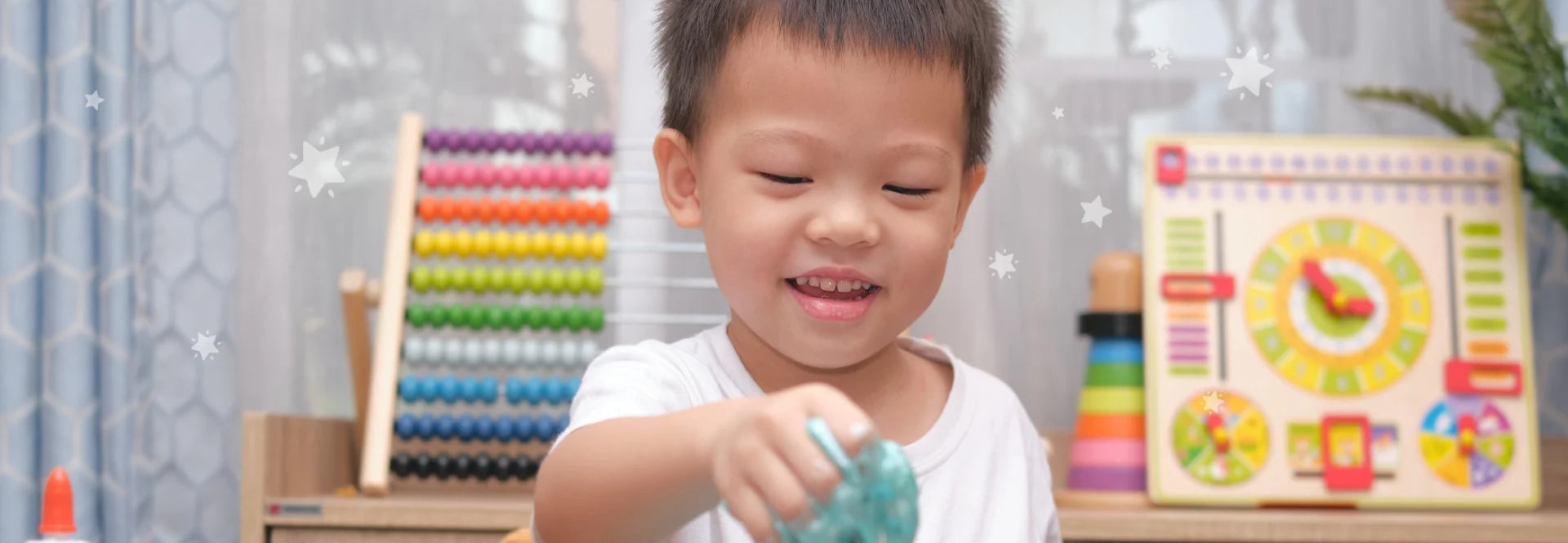Why Science Matters for Preschoolers
Preschoolers are natural explorers who are ready and able to learn basic scientific concepts. 1 ,2 With fun science experiments, you build on their biological drive to engage their environment—and you—while broadening their knowledge of the world around them. 2 Child-centered science activities that pair structure with opportunities to play, invent, and experiment also set children up for future critical and scientific thinking. 1
Fun Science Experiments for Your Preschooler
There are endless ways your child can thoughtfully interact with their environment. Develop your little one’s scientific thinking by helping them slow down and apply the steps of the scientific method: question, observe, predict, experiment, and discuss. 3 Here are four entry points to scientific play and specific experiments to engage your little scientist:
-
Get Gooey. Making slime isn’t just gooey, full-sensory fun: It can also teach your child about chemistry, density, and more. To make slime at home, you’ll need a bottle of school glue (147 ml), 2 mL of baking soda, and 7 mL of contact lens solution (plus any other add-ins you like, such as glitter or food coloring). Before mixing, observe the consistency of each ingredient and how it pours. As they mix, note the consistency change. How sticky is it? How does it move? What if you try again with some water added or less glue? Experiment with different ratios and discuss what you notice together.
-
Build It Up. With a few household items and the prompt to build a tower as high as they can, your preschooler can practice planning, problem solving, and engineering skills. You can engage their fine motor skills by requesting a toothpick city (with apple or marshmallow pieces as joints) or make it a full-body experience by suggesting a couch-cushion tower. Inject scientific thinking into the fun by discussing plans before they start the build. Ask, how high will the tower be? Which methods will work best? After they execute one plan, experiment with a different method and compare results.
-
Cause an Eruption. Head to the sandbox or beach for this messy, explosive experiment that teaches about chemical reactions. To make a sandbox volcano, you’ll need a plastic cup, 240 ml water, 60 ml baking soda, 240 ml vinegar, 30 ml washable paint, and 5 ml dish soap. Make a mound of sand around the right-side-up cup without letting any sand inside it. Then, pour everything into the cup except the vinegar. The baking soda in the mixture is the base. The vinegar is an acid. When acid is added to the base, the chemical reaction creates carbon dioxide. Let your little one pour the vinegar into the cup for a bubbly eruption.
-
It’s Alive! Bring the outdoors inside with containable creatures like earthworms, caterpillars, ants, and snails. Your preschooler can observe their life cycles and habits and predict their actions. What will the ants do with a crouton? How long will it take the butterfly to emerge from the chrysalis? Let your preschooler’s curiosity lead by having them create a list of questions about their new insect roommate and invent more experiments together from there.
Developing your child’s scientific thinking is just one way to foster their growth. You can also support your kid’s brain development with nutrients found in Enfagrow A + and other forms of cognitive play. With fun science experiments and hands-on activities, you can make memories and build mental frameworks that can serve your child for their whole lives. 1
1.https://ecrp.illinois.edu/beyond/seed/worth.html
2.https://www.ncbi.nlm.nih.gov/pmc/articles/PMC4273897/
3.https://eclkc.ohs.acf.hhs.gov/video/using-scientific-method





